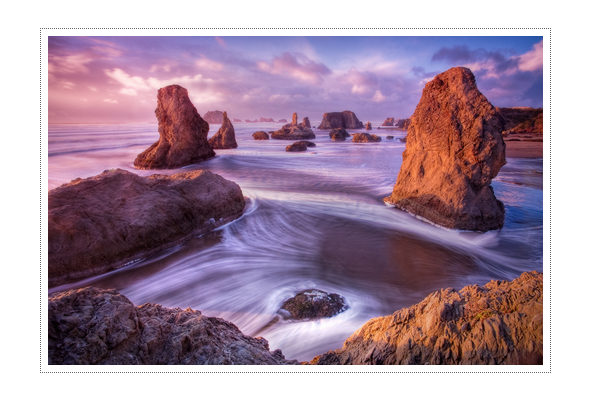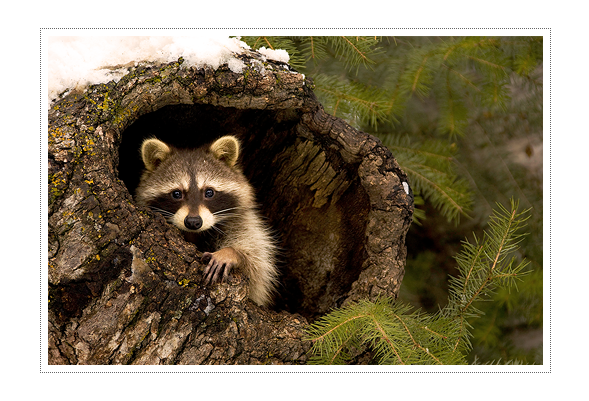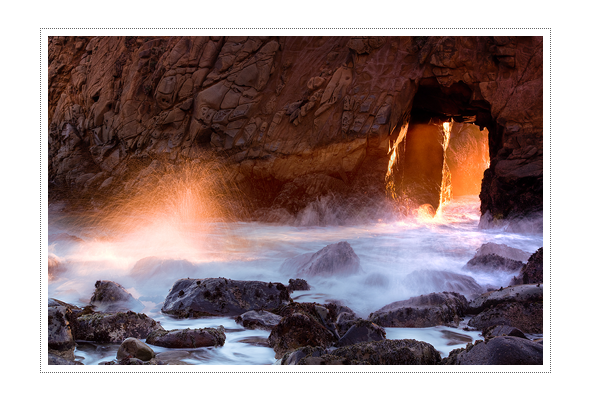|
Over the years, I've worked with hundreds of photographers and with all aspects of photography, and one of the most frequent questions I hear often revolves around composition. Understandably too -- there's really no right or wrong, everyone's approach is different and everyone sees the world a little bit differently. (Well, some more than others I suppose!)
Composition can be hard to learn, and hard to teach. You know it when you see it; it strikes an emotion, it tells the story, it lends fresh perspective. Good composition can turn an ordinary scene into an image that grabs attention and engages the viewer.
The trouble with composition is that there is no mathematical formula, or step-by-step rules to guide you; there is no button on the camera for "automatic composition." It's one of the most important elements in photography, yet, despite leaps in digital technology, it's the one aspect we must still perform manually.
I'll say it again, composition is one of the most important elements in photography -- with your camera in auto mode, and a good eye for composition, you can begin to take photographs that will impress even the toughest critics!
Composition is a tricky thing. There's no right and no wrong. Often a photographer's uniqueness, his or her style, is attributed largely to their approach and vision to composition. I'm going to share with you mine, and how I often teach it, and if you learn something from my approach you'll likely go on to develop your own eye for composition.
So what is it? To me, it's an ingredient, a balance and a flow. It is a means to tell the story, to pull the viewer into that single moment in time. It's a rock in the ocean that anchors the lower portion of the scene, tying the surf to the horizon and a warm, colorful sunset in the distance. It's the depth of field that isolates a subject from it's busy background. And sometimes, it's as simple as fresh perspective, the notion of conveying a common idea such as a road winding into the forest, but inches off the pavement where the freshly painted yellow stripe leads the eye out with great detail...you can almost feel the road, it's cold and rough.

- Move your mouse over the image above -
I often spend more time searching for composition than actually shooting it. At times it can be elusive, sometimes you pass it by unnoticed, other times it appears only at certain times of the day, the month or the year. Sometimes it's so obvious it smacks you in the face, often times you've seen it before, it's iconic, amazing and begs to be photographed. And you should.
Sometimes I hunt for compositions, many of them in one day, saving them in my memory for future trips to locations I visit repeatedly. I'm often rewarded by great adventures and new discoveries, which makes the search for composition a great way to spend the harsh light hours of the day.

- Move your mouse over the image above -
I have a love/hate relationship with the rule of thirds. First of all, it's not a rule at all, but rather a guideline. Really it should be called "compositional guidelines" but I'm not sure "compositional" is even a word, and who could even spell it if it is.
I love it because it's a great guide to composition, yet when I teach someone about the rule of thirds I often feel like it limits their creativity -- as if there is now a right and a wrong way to compose.
To apply the rule of thirds to a scene, it's as simple as drawing an imaginary tic-tac-toe grid in your viewfinder. Or, if you have a newer camera, I've even seen some that come with these lines either in the viewfinder and/or on the review screen.

- Move your mouse over the image above -
The idea behind the rule of thirds is that you have elements in the scene intersect with the points where the lines cross (there would be four points that meet; mouseover the photo of the raccoon above for an example). The other idea behind rule of thirds is balance... for example, a photo with the foreground and sky, balance it into 2/3rds land or water and 1/3 sky, or visa versa...again there are no rules, choose whichever you like and what feels right to you.
One of my favorite things about composition is the power to draw someone into the scene; to grab their eye and then lead them in, pulling them through the image and igniting their senses. To make this happen, you need to consider the elements for compelling composition:
Leading Lines
Leading lines are often strong anchors to composition. I often visualize these "lines" when I look at a scene, asking myself where the eye might start, follow and end. It's a smooth, curving line, often the shape of a boomerang or shallow "s." I like to think of leading lines like drawing with an etch-a-sketch. Remember those flat red boxes with two white knobs...you could twist and turn but the line was never broken. It was always one long, continuous line. I see composition the same way where the line should not break, it should flow, either in or out, but never break.
Perspective
Sometimes when you're searching for composition, if you lean over, sit down, stand up or otherwise find an unusual perspective, it will be right there waiting for you. I'll often exclaim, "Hey, I found some over here!" Like I just found gold nuggets in the river. But why is that? It's because most people see the world standing up. For example, I'm sitting on an airplane right now (writing this) and if I were to lay down on the floor and take a picture down the aisle, I would have a unique perspective of rows of chairs and people's feet. A view that is rarely scene, thus I created a photograph that sparks interest for its uniqueness and originality. I might also be arrested, but you get the idea.
Depth of Field
If you are familiar with depth of field, then you know that using a wider aperture (lower f/stop) allows you to put focus on a certain area or element in your composition. By doing so, you draw immediate attention to your subject, putting it in focus and making it sharp, so it stands out with crisp definition from the blurry (often referred to as "bokeh") background. Depth of field is an excellent way to enhance composition and draw attention to a person, animal or other definitive subject.
Patterns and Symmetry
Mother nature and human creativity often provide elements that can be leveraged for amazing compositions. Maybe it is in the desert sand, where the wind has carved random patterns in the dunes that create textures, color and leading elements in your foreground. Or maybe it is a brick or tiled floor with its uniform squares and rectangles that produce interesting ways to compose a scene that lend to scale or distance. These types of compositional elements are all around you, you just need to look for them and when you do, pause to see them from different angles -- and you will be surprised at what you'll be able to capture.
Ultimately, when you pick up your camera, you are preparing to tell a story. A story woven around your subject, which will move your audience, and if you get it "right" anyone who sees it will take that image, that story and its emotion, with them. As with any good story, it must convey emotion, stir interest, catch attention, and this is all done through your personal choice of composition. A composition that factors in scale, emotion, external conditions, perspective and viewpoint...but ultimately, through your personal connection and view of your subject. There are no right or wrong rules for composition, but when you get it right, you have told a story worth sharing.

- Move your mouse over the image above -
|













